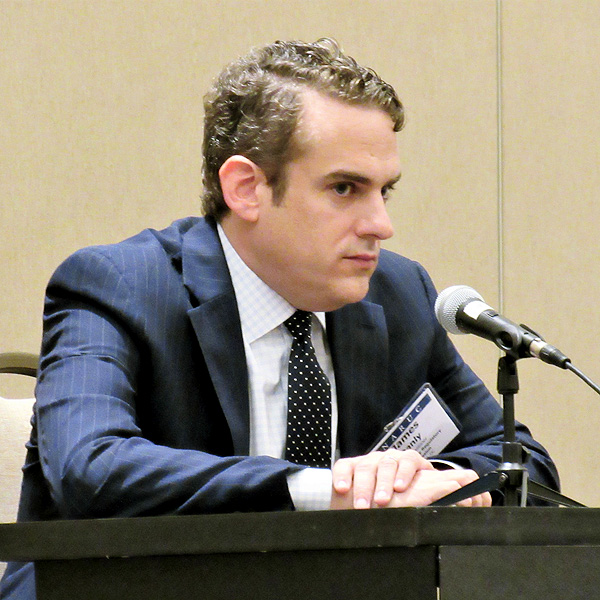
LOUISVILLE, Ky. — Electric industry officials at the National Association of Regulatory Utility Commissioners’ annual meeting expressed hope that FERC’s recent advanced notice of proposed rulemaking (ANOPR) will live up to its goal of improving regional transmission planning.
During a Wednesday panel discussion, Krista Tanner, ITC Holdings senior vice president, said she was “really relieved” that FERC agreed that “something needs to change.”
The ANOPR seeks to get more transmission built, clear generation interconnect queues, and reach better consensus on cost allocation. (See FERC Goes Back to the Drawing Board on Tx Planning, Cost Allocation.)
“We’re practically glacial,” Indiana Utility Regulatory Commissioner Sarah Freeman said of the pace of major transmission planning.
Tanner said MISO’s Multi-Value Project portfolio created renewable zones in the footprint and helped clear a “200-year” interconnection queue.
“Let’s do that again, and let’s do it more often,” she said.
Tanner also said it’s time to scrap FERC Order 1000.
“Enough time has gone by that we know it’s not working and it’s having a chilling effect” on transmission construction, she said.
Asim Haque, PJM vice president of state policy and member services, asked that FERC publish a definition of resilience for grid planning. He said resilience should be a shared goal across grid operators’ footprints and placed in the “rubric” of cost allocation.
Public Service Enterprise Group General Counsel Jodi Moskowitz said she hopes the ANOPR directs RTOs to conduct long-term scenario planning that includes the benefits of addressing climate change.
“Most importantly, how can we get some certainty in cost allocation so new transmission can be built?” she said.
Moskowitz said she hoped the commission designs rules that consider lack of transmission investment costs in comparing construction costs.
Freeman asked whether the rulemaking will preserve planning processes that already work well.
“I think it’s fair to say right now that PJM’s planning process is very transparent,” Moskowitz said. But she added that regulators could get more involved in the RTO’s planning meetings.
“We’d like to get the states’ upfront buy-in about transmission needs,” she said.
Moskowitz also said she doesn’t agree that local transmission projects are supplanting the need for regional projects. The two serve different purposes, she argued, with local projects necessary to address upgrades for age and storm hardening and regional projects needed to meet decarbonization goals.
Danly Expresses Tx Cost Misgivings
In an earlier address, FERC Commissioner James Danly called out a recent flurry of transmission-planning activities and price formation in the commission’s jurisdictional markets as areas of concern.
“There is a feeling these days — part of the zeitgeist — that we need to string up wire everywhere we possibly can to bring online intermittent resources,” Danly said during a Nov. 8 session.
He said the idea of “cheap power being shunted across the country” is an illusion if ratepayers are forced to pay for “exorbitant” transmission buildout.
Danly said he gets the feeling that grid planners are ready to propose projects without much forethought. He singled out MISO’s three, 20-year planning futures for praise. He said the RTO has done an admirable job of estimating transmission needs across multiple scenarios.
“That candor is much appreciated,” Danly said.
He also said wholesale rates aren’t encouraging the right mix of generation or new resources. He said so far, intermittent resources have benefitted from operating alongside a “still very healthy chunk of dispatchable resources.”
“But my worry is, over time, the system will become unstable … It’s impossible to say what the right mix should be,” he said.
Michelle Manary, acting deputy assistant secretary in the Department of Energy’s Energy Resilience Division, agreed it’s a “tough assignment” for engineers to plan a resilient and reliable system when the ultimate resource mix and number of distributed resources is uncertain.
“We are asking them to change drastically,” she said, referencing the Biden administration’s goal for net zero emissions by 2050.


